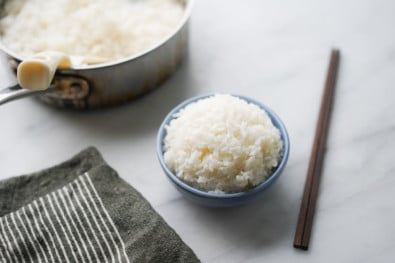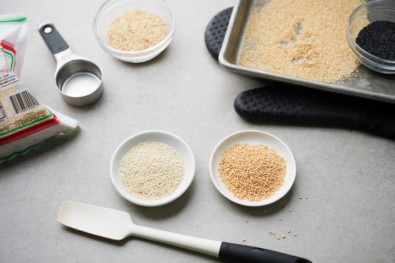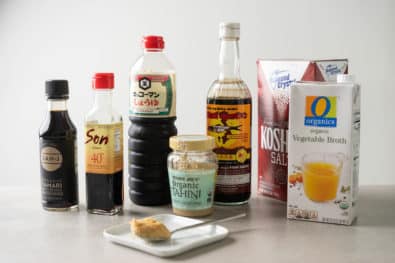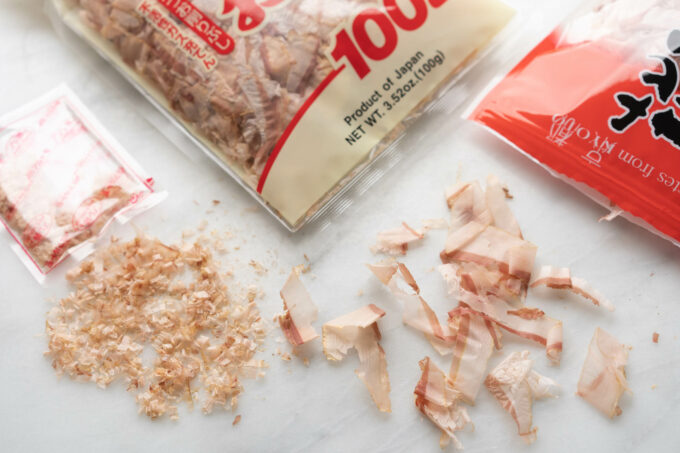
Katsuobushi is fermented and smoked skipjack tuna shaved very thinly and used as a topping for popular Japanese dishes like takoyaki or combined with kelp to make dashi. But there’s a lot to learn about bonito flakes, like how it’s made and the different flavor profiles for each type of katsuobushi.
Why do we make bonito and bonito flakes?
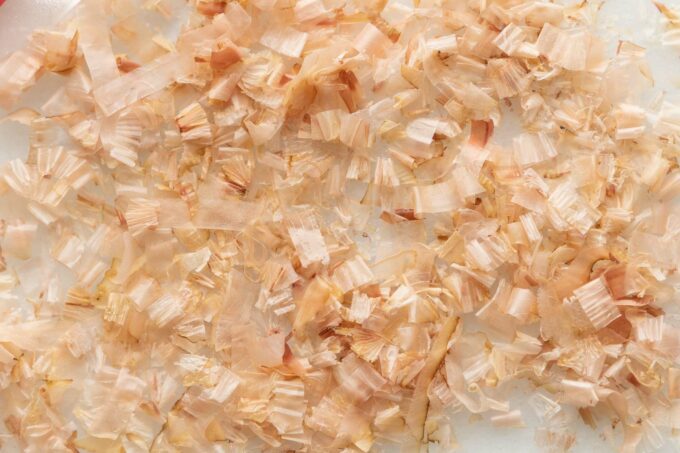
Bonito and bonito flakes are not only made for food preservation, but they also give us more robust and bolder umami flavors. Katsuobushi developed from other forms of dried bonito during the Edo period (1603-1868) in Japan. Boiled and smoked fish was called arabushi, and a century later, they started using mold as an additional fermentation method to enhance and deepen the flavor. It’s used in Japanese cuisine as a main ingredient for recipes and garnish.
Are bonito flakes real fish?
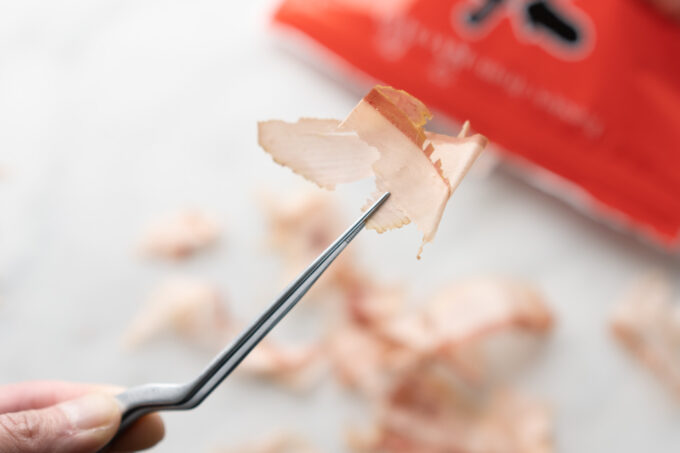
Bonito flakes are made from real skipjack tuna that has been processed and preserved. When using bonito flakes as a garnish, you may see the flakes “dance” or “move,” but it’s due to lightweight and thin shavings reacting to the heat from the hot food.
How bonito or katsuobushi is made
Katsuobushi is made by boiling, dry-smoking, and applying a beneficial mold named Aspergillus glaucus to skipjack tuna. The bacterial mold furthers the fermentation process and enhances the flavor. At the end of preservation, the bonito will resemble a hard, wooden block because all its moisture will be removed.
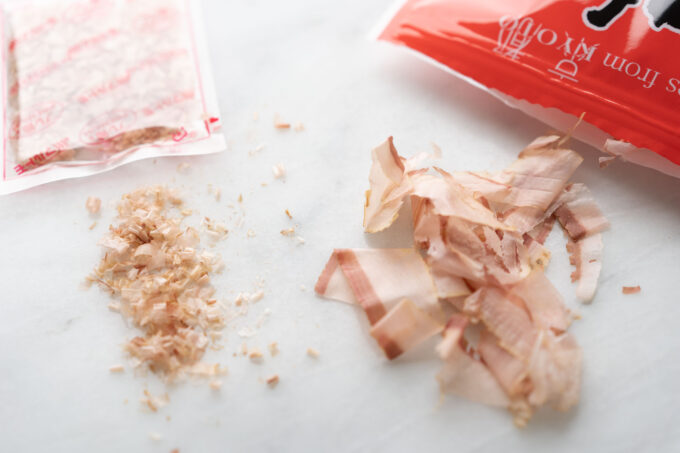
There are different grades of katsuobushi, which depend on how often it’s completed the drying and fermentation process. Some grades can take a few weeks, while high-end grades can take several years. Here are the four general varieties:
- Arabushi: The skipjack tuna is boiled and smoke-dried but is not fermented. It has a strong smoky flavor and is typically less expensive because it’s quicker to produce.
- Karebushi: The skipjack tuna completes a three-step preservation process two times. This process includes boiling, smoke-drying, and fermenting with the mold on top. As a result, karebushi has a richer umami flavor than arabushi due to the fermentation process.
- Honkarebushi: In addition to processing bonito twice for karebushi, honkarebushi completes the preservation process at least three times (and, in some cases, several more times). This results in a very complex and deep flavor of fish. Honkarebushi is also one of the most expensive grades of katsuobushi.
- Hanakatsuo: Thinly shaved arabushi that looks like wood shavings used for toppings. Since it hasn’t gone through the fermentation process, it’s got a light and delicate flavor profile.
How bonito flakes are used
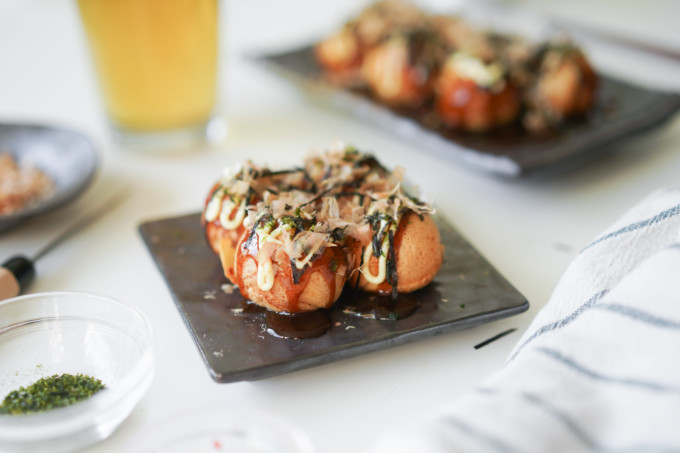
There are many ways to use bonito flakes to add a little extra flavor on top of a dish, like takoyaki (Japanese octopus balls), somen noodles, yakisoba, agedashi tofu, okonomiyaki topping, onigiri (Japanese rice balls), homemade dashi with seaweed, or miso soup.
Does bonito taste fishy?
Yes, bonito flakes have a more robust fish flavor and aroma because the preservation process enhances their umami flavor profile. The bonito flavor profile is smoky, salty, and meaty.
Are bonito flakes healthy?

There may be positive effects from eating bonito flake broths for seniors such as lowering blood pressure. Bonito flakes also are rich in antioxidants and vitamins, like Vitamin D and potassium. Additional studies also state bonito has anti-inflammatory effects on the body.
Where to buy bonito flakes?
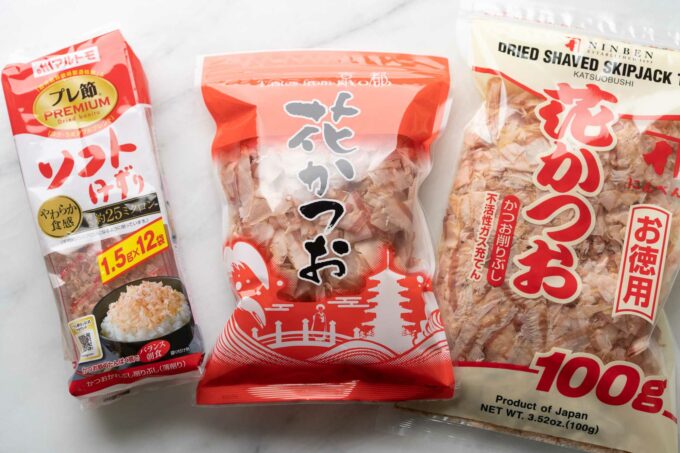
I buy bonito flakes at my local Japanese grocery store, Mitsuwa Marketplace, or other Asian grocery stores like H-Mart, 99 Ranch, or Seafood City. You can also purchase bonito flakes from online stores, like MTK Kitchen.
Commercially, you will find bonito pre-shaved, so you don’t want to open these bags until you’re about to serve them. Some bonito flakes come in separate bags, so you don’t need to use the entire container, which I prefer because the unopened bags stay fresh. After opening, try to use the bonito flakes as soon as possible because the flakes will wilt quickly.
For more expensive grades like honkarebushi, you can find them sold in whole blocks, and you will need a bonito shaver box to make cuts at home.
What is a substitute for bonito flakes?
If you don’t have access to bonito flakes in your area, there are other options to use as a substitute for recipes. However, note that the fermentation process for bonito creates such a deep and bold flavor profile that it’s hard to replicate from common ingredients.
For example, if you are trying to make a broth, you can substitute dried baby anchovies instead of bonito flakes. For vegetarians, you can also use mushroom powder, dried mushrooms, or dried kelp (kombu) as a substitute for bonito flakes.

